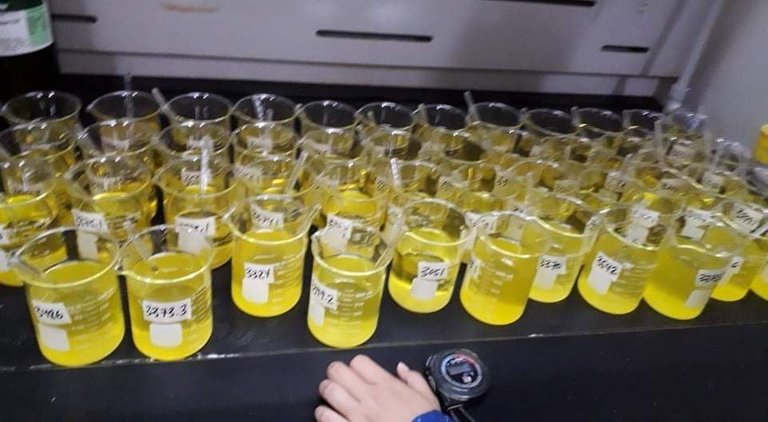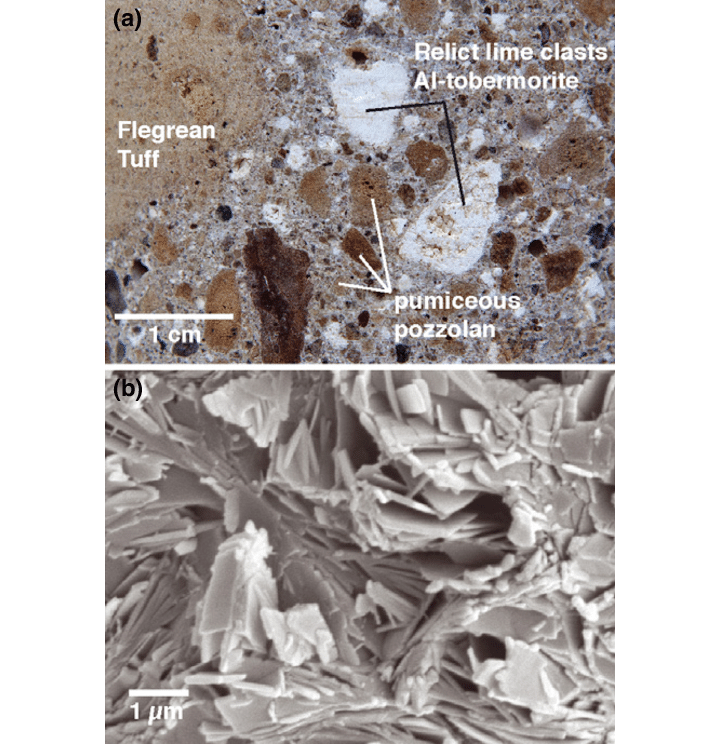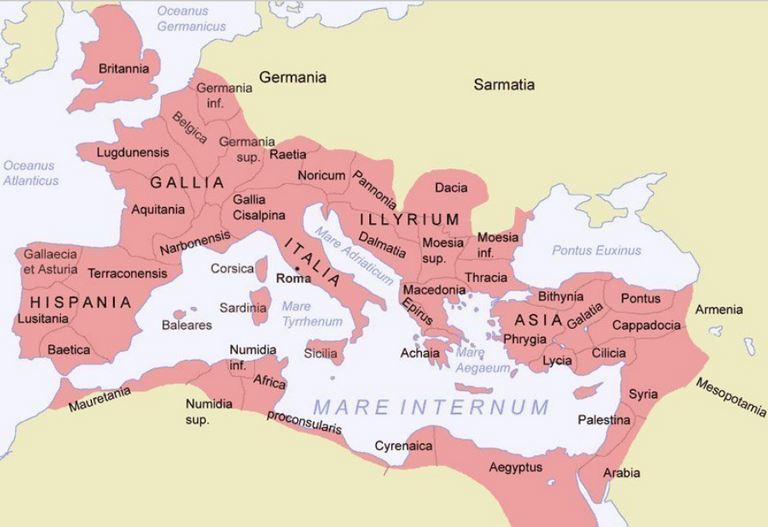Hidden gems in cement
I return! With another Science blog hehe. I promise I'm not such an intense nerd, but materials honestly fascinate me. Previously, I talked about coal, coal types and their pecific use. I'm not sure if I'm up for talking about the types of testing we had to do on them sincce that would be a breach in laboratory confidentiality, and I am definitely not ready to go to jail yet.
Anyways, aside from testing coal, I also got to experience testing cement and cement blocks from when I worked in an engineering lab. I didn't stay long there, but I did get to experience a lot of different materials there. I would say that facility-wise, it was the worst lab I've ever been to, but knowledge-wise, it was a good place to learn.
From there, I actually learned that testing cement takes about a week to complete since in that lab, we used traditional wet chemistry for it. And that involved a lot of filtering. I remember then that in a day, we had 70+ samples to dissolve, filter, dry, cool, weigh and redissolve again for the next analyte. In a day, we can mostly finish 2-3 analytes, depending on how nice management was to us that day, because on some days, they would just barge into the lab and demand us to look for this and that while in the middle of an analysis. It was annoying and we hated the management for it because we couldn't finish our backlogs because of them.

All the samples I used to analyze and more

Dissolved cement sample for sodium precipitation
Back to the analytes. In cement, you have 8 major metal oxides but for this article, I think I'll just highlight 5 since something interesting happens to those 5 components.
| Compound | Formula |
|---|---|
| Calcium Oxide | CaO |
| Silicone dioxide | SiO2 |
| ------------ | ------------ |
| Aluminum Oxide | Al2O3 |
| Iron Oxide | Fe2O3 |
| ------------ | ------------ |
| Water | H2O |
| Sulfate | SO3 |
| ------------ | ------------ |
Why am I highlighting just these components? because they are the core of cement mixes. The percentage would just depend on the type of cement they were producing (because I remember there were different kinds of cements but I forgot their specific names, i just know that calcium and sulfur levels were the only things that changed in those).
They are called core components for a reason. You see, these were the very components of Roman cement. Yes, this mixture was what built rome's great and amazingly preserved infrastructures. I dug into that and the use of limestone as concrete. It was pretty cool because What they started is still being used to this day (But with modified formulation, of course).
Back then, their concrete formulation consisted of lime stone (calcite taken from the ocean. Or they sometimes they used seashells as a replacement and that's perfectly fine because they have the same chemical constitution of Calcium carbonate (CaCO3)), then they used volcanic ash (the sulfur and alumina source) or sand (silica and alumina source) (because Rome has volcanic lands), seawater or any water then volcanic rocks as fillers.

An example of a colliseum built in rome that remained well preserved to this day
Source: https://www.history.com/news/the-secrets-of-ancient-roman-concrete
You can see how their simple formulation can make these structures last centuries. Unlike now, the concrete formulation has changed so much and the lime source has shifted to petroleum byproducts so we think it could have attributed to the compressibility weakness (But I'll talk about that on another article, maybe?). Anyways, I found something much more impressive when looking through the material and durability comparison of the Roman concrete formulation vs. The concrete formulation now. And that is the fact that Calcium in Roman concrete reacts with seawater to form aluminous tobermorite.
Aluminous Tobermite (Al-Tobermorite) is a calcium silicate crystal that kind of reinforces the concrete block and makes it stronger. Although the crystal itself isn't so strong (with a moh's hardness rating of 2.5), it still adds to the stability of the structure. It's molecular arrangement is fascinating too because it forms fine fibers and plates, And that in itself is a pretty strong structure unlike with most crystals that sometimes have holes in their structures, this one is solid (yet still soft).

A close up of Al-Tobermite along with an SEM scan to show the crystal sheeting and foramtion
source: https://www.researchgate.net/figure/Volcanic-ash-hydrated-lime-mortar-of-the-ancient-Roman-Baianus-Sinus-concrete-late-first_fig1_251875478
Just the crystal growth that replaces the weathered parts of cement is enought to fortify the strusture, unlike now, when concrete gets soaked in saltwater, it degrades, crumbles and just adds micropollutants to the ocean. But I think this discovery of theirs worked to their advantage becaause the roman empire was surrounded with seawater and volcanic lands. I'd say they were ingenious wih their adaptability to their available resources.

A map of Rome at it's peak. I wanted to highlight the body of water that surrounded the lands
Source: https://ancientengrtech.wisc.edu/roman-concrete/
Much more so knowing that the Romans were the first in history to have a historical record of cement use.
Anyways, this is all from me for today! I still have work tomorrow and I'm still in a dilemma with my career, I swear. It pretty much explains my inactivity these days XD
Sources
Fluid chemistry, Drilling and Completion
https://doi.org/10.1016/B978-0-12-822721-3.00008-3
https://newscenter.lbl.gov/2013/06/04/roman-concrete/`
What is the dilemma? Just curious! Anyways good ! I didn't know that cement was such as complex!!
!1UP
Click this banner to join "The Cartel" discord server to know more.
Currently thinking if I should continue staying in this food lab I'm in or if I should try the BPO industry because at least they get 2 rest days
You have received a 1UP from @gwajnberg!
@stem-curator
And they will bring !PIZZA 🍕.
Learn more about our delegation service to earn daily rewards. Join the Cartel on Discord.
What's the 1up cartel?
Congratulations @bananzell! You have completed the following achievement on the Hive blockchain and have been rewarded with new badge(s):
Your next target is to reach 1500 upvotes.
You can view your badges on your board and compare yourself to others in the Ranking
If you no longer want to receive notifications, reply to this comment with the word
STOPCheck out the last post from @hivebuzz:
Support the HiveBuzz project. Vote for our proposal!
This is awesome to read and very educational
Yay! 🤗
Your content has been boosted with Ecency Points, by @bananzell.
Use Ecency daily to boost your growth on platform!
Support Ecency
Vote for new Proposal
Delegate HP and earn more
Lage ako natutunan syo madam. Hirap maging chemist 🤣
Masaya Naman maging chemist tho UwU
Thanks for your contribution to the STEMsocial community. Feel free to join us on discord to get to know the rest of us!
Please consider delegating to the @stemsocial account (85% of the curation rewards are returned).
You may also include @stemsocial as a beneficiary of the rewards of this post to get a stronger support.
Welcome to STEMSocial! Looking forward to your next personalized posts like this.
Thank you. I hope you found an appreciation for cement this way
Our roads crack all the time, and every couple months we need to take detours cos they get repaired. Ancient Roman roads put ours to shame.
Ohh definitely but their roads were often cobblestone and bricks, much different from the laid out cement sheets modern roads use now
Filed under "why does our roads suck".
!discovery 37
🤣🤣🤣 petition to bring back ancient cement
This post was shared and voted inside the discord by the curators team of discovery-it
Join our community! hive-193212
Discovery-it is also a Witness, vote for us here
Delegate to us for passive income. Check our 80% fee-back Program
Awesome post, as is cement. So many chemical reactions going on to make it what it is and dependant on so many factors.
Just built a house so did a lot of reading up on cement and concrete, especially in a tropical climate, getting it right is so difficult.
Best wishes and hope you're having a wonderful weekend :-)
So that's where you disappeared to 🤣
Cement is so different when you check on it from an Asian setting though cuz I think the concrete used here has more fly ash or something